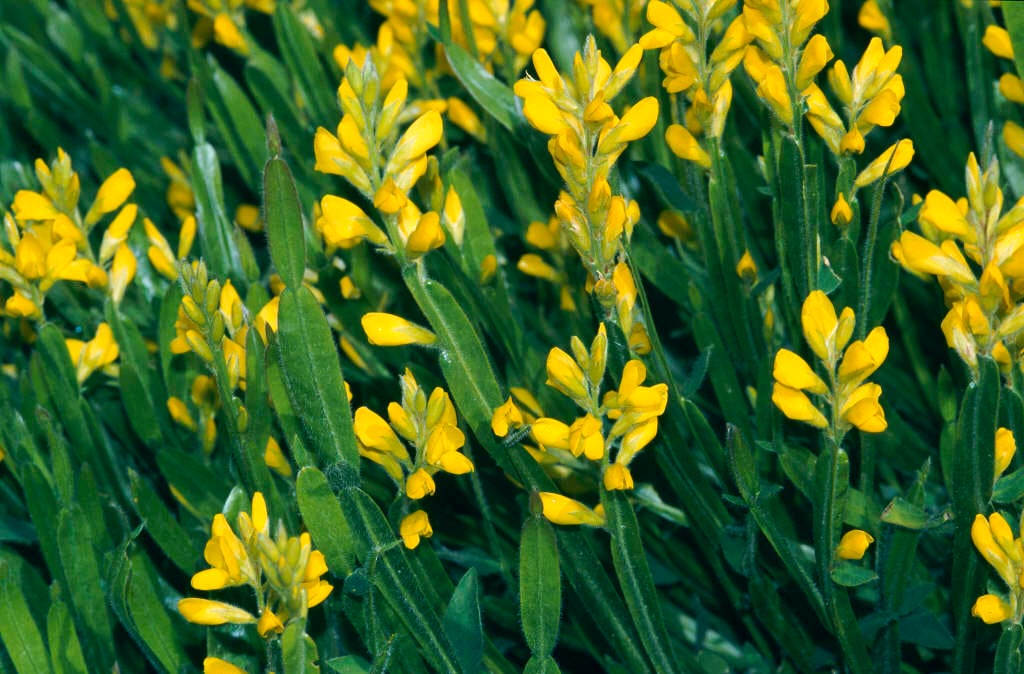Genista sagittalis
arrow-jointed broom
A prostrate deciduous shrub to 15cm tall, forming a wide mat of flattened, upright stems bearing sparse, small leaves and terminal clusters of yellow flowers 10mm long, in early summer

Buy this plant
Size
Ultimate height
0.1–0.5 metresTime to ultimate height
2–5 yearsUltimate spread
0.5–1 metresGrowing conditions
Moisture
Well–drainedpH
Acid, Alkaline, NeutralColour & scent
| Stem | Flower | Foliage | Fruit | |
| Spring | Green | |||
|---|---|---|---|---|
| Summer | Yellow | Green | ||
| Autumn | ||||
| Winter |
Position
- Full sun
Aspect
South–facing or East–facing or West–facing
Exposure
Exposed or Sheltered Hardiness
H5Botanical details
- Family
- Fabaceae
- Native to GB / Ireland
- No
- Foliage
- Deciduous
- Habit
- Matforming
- Genus
Genista are deciduous, sometimes spiny, shrubs or small trees with small, simple or trifoliate leaves and solitary, racemose or clustered, pea-like yellow flowers which are sometimes fragrant
- Name status
Correct
- Plant range
- Europe to Turkey
How to grow
Cultivation
Grow in light, poor to moderately fertile, well-drained soil in full sun
Propagation
Propagate by seed. Sow seed in containers in cold frame as soon as ripe or sow in spring. Take semi-ripe cuttings in summer
Suggested planting locations and garden types
- City and courtyard gardens
- Cottage and informal garden
- Rock garden
- Coastal
- Gravel garden
- Banks and slopes
- Flower borders and beds
Pruning
Pruning group 1. Do not cut into old wood
Pests
May be susceptible to aphids and gall mites
Diseases
May be susceptible to honey fungus in gardens where it is present but insufficient data to determine degree of susceptibility
Get involved
The Royal Horticultural Society is the UK’s leading gardening charity. We aim to enrich everyone’s life through plants, and make the UK a greener and more beautiful place.